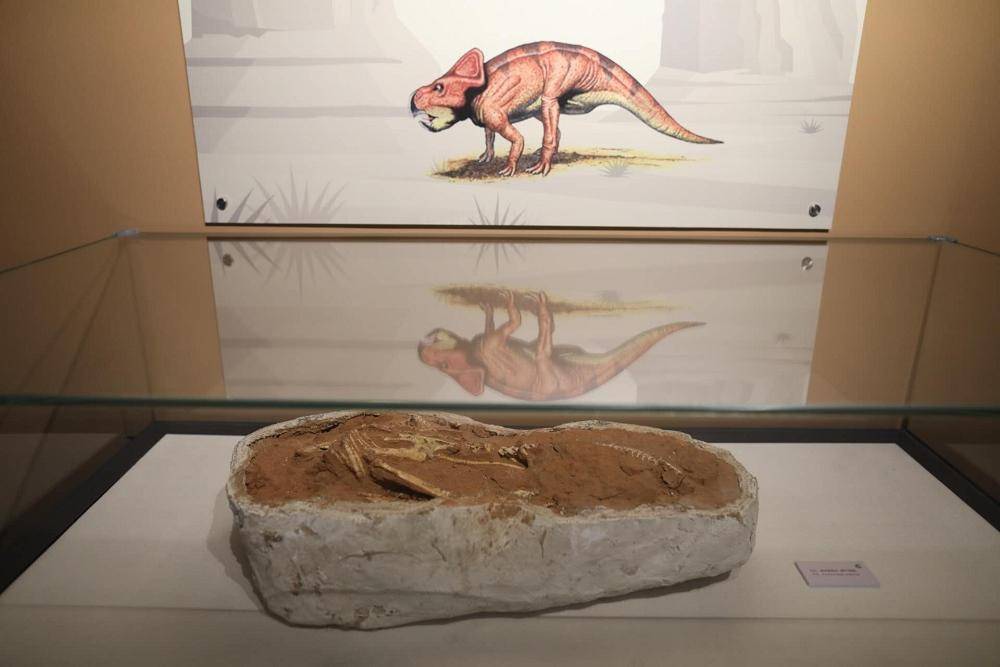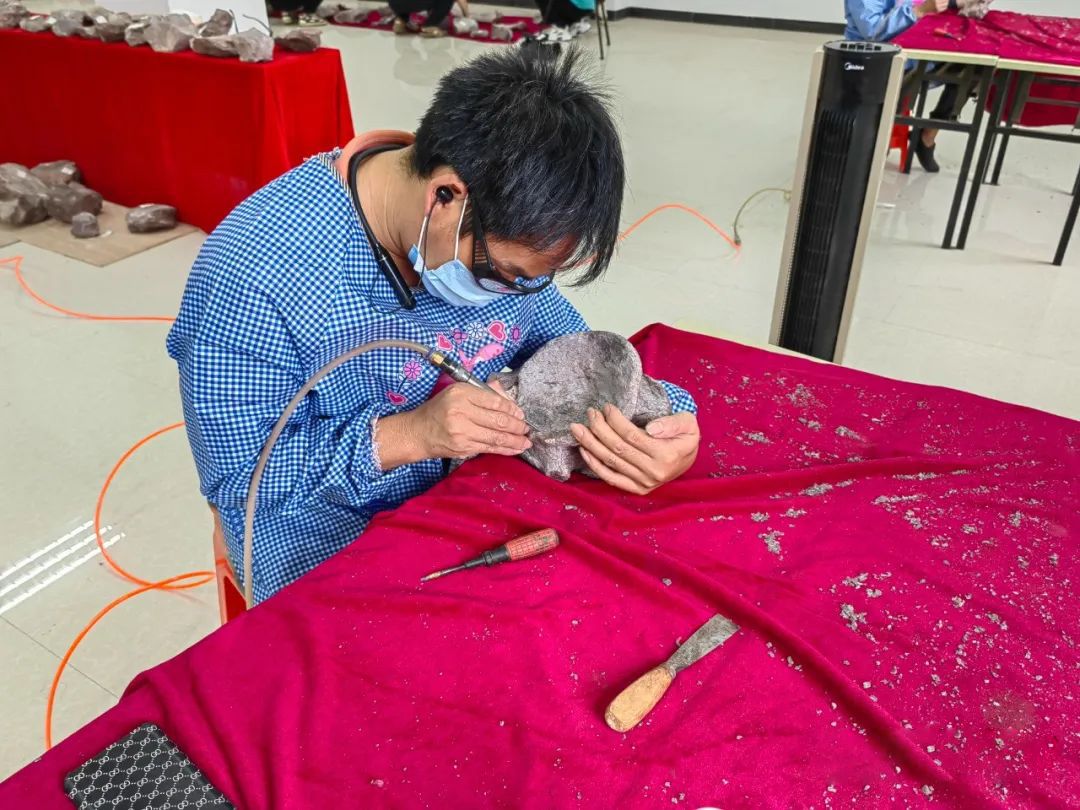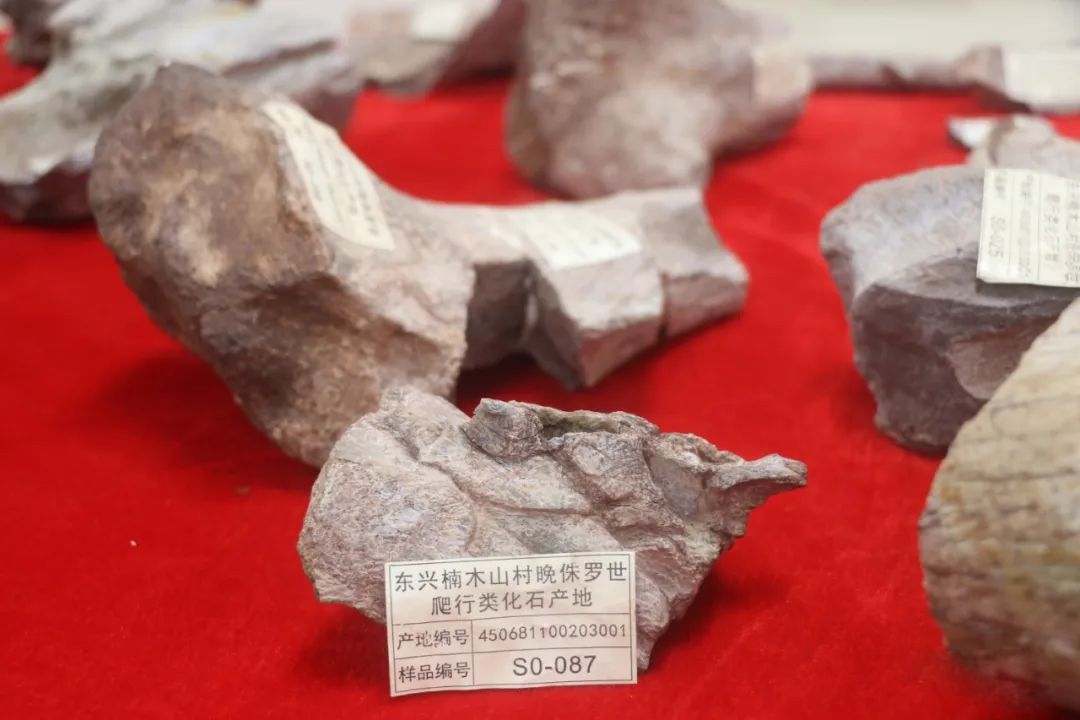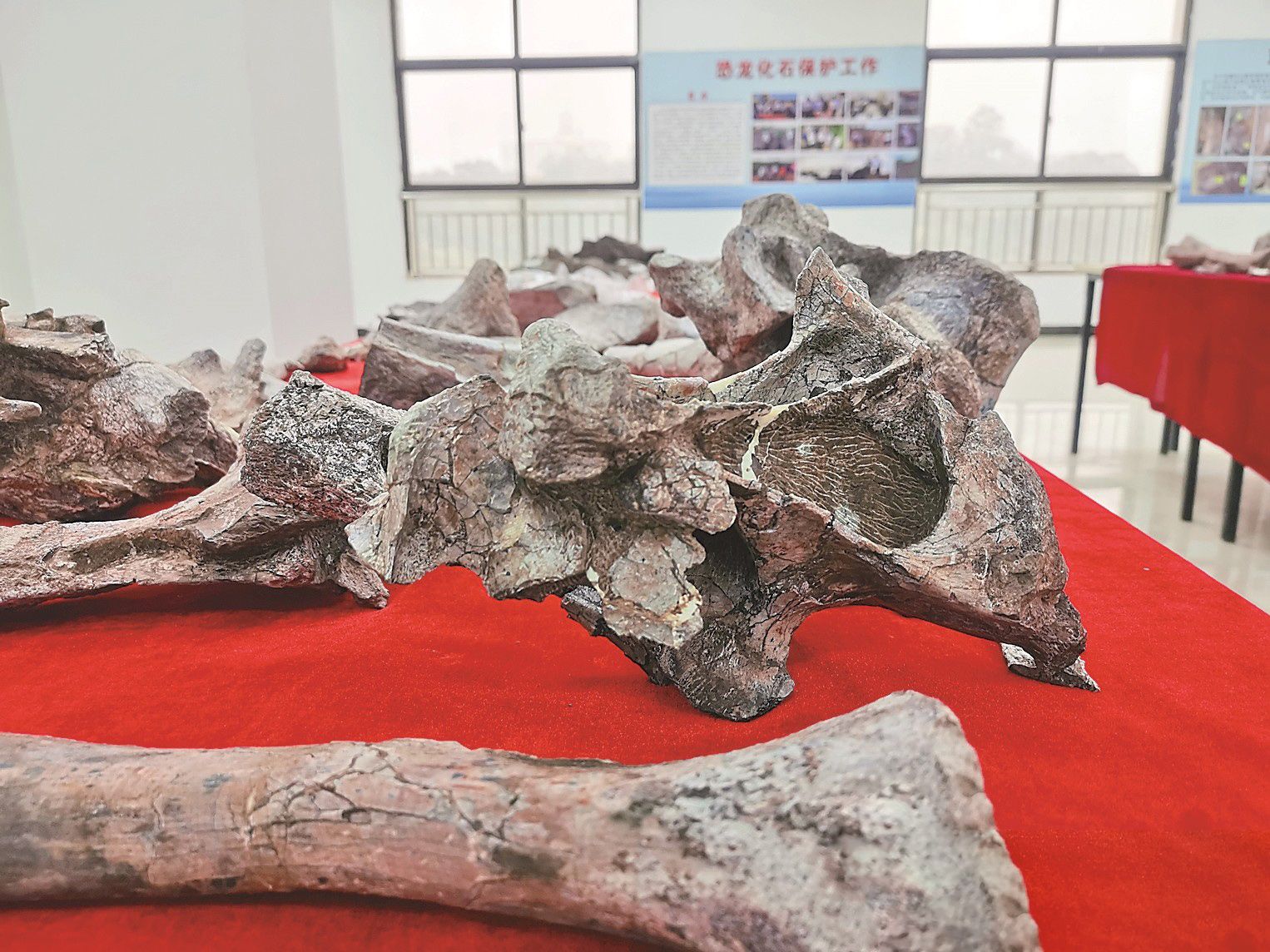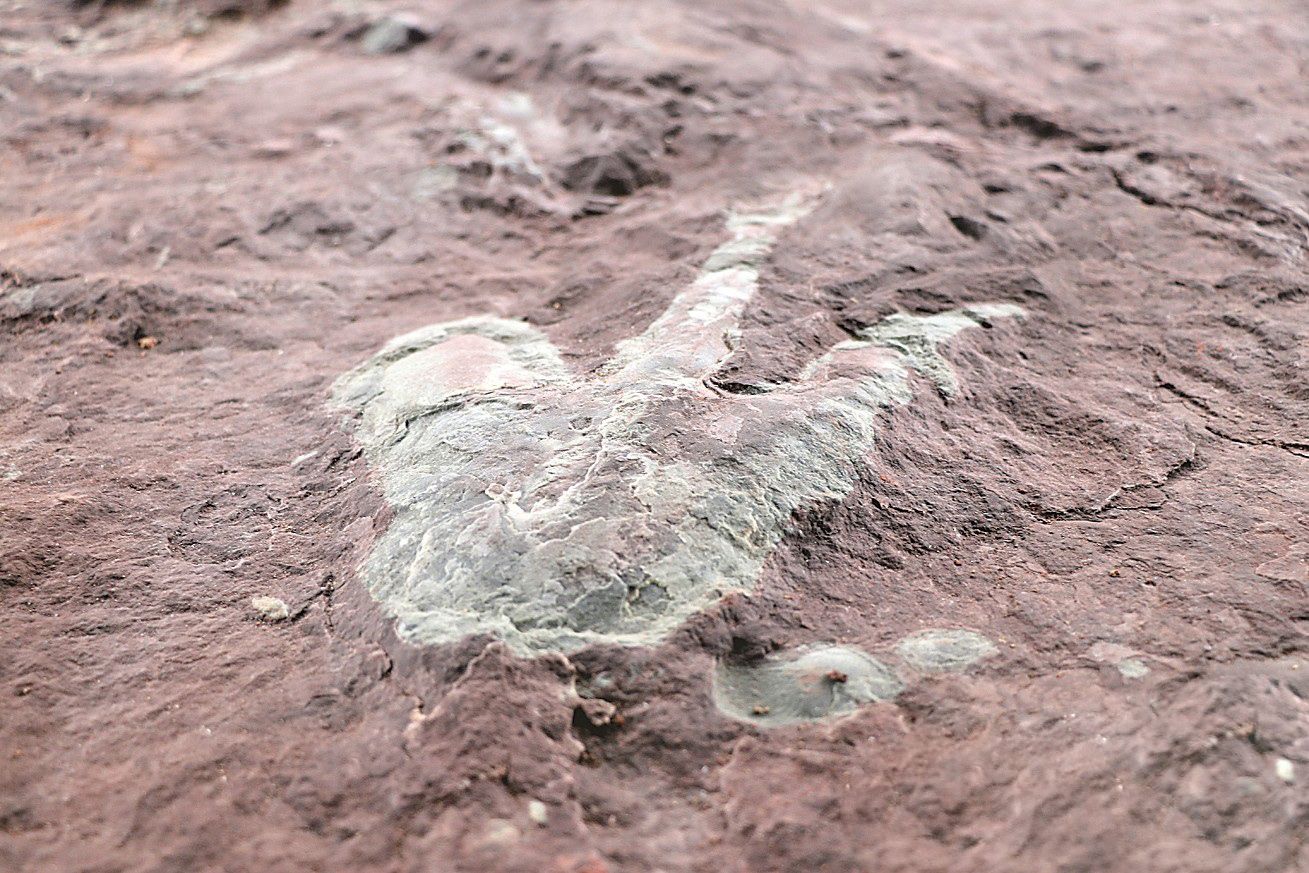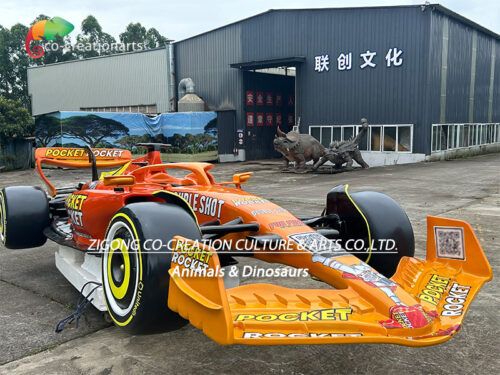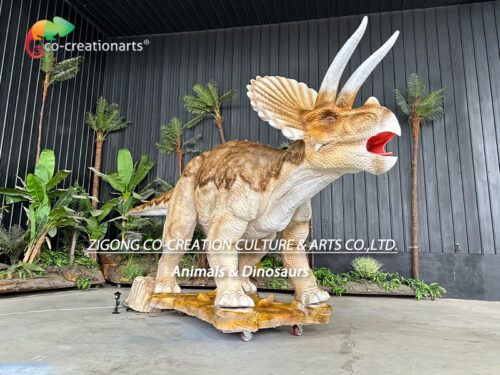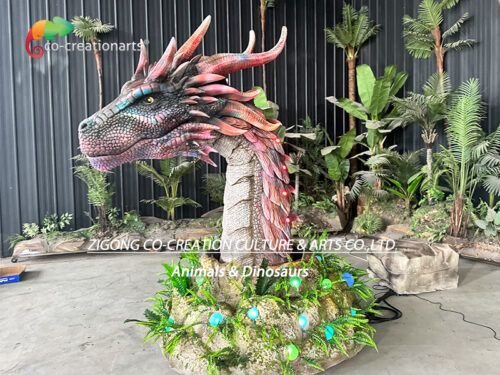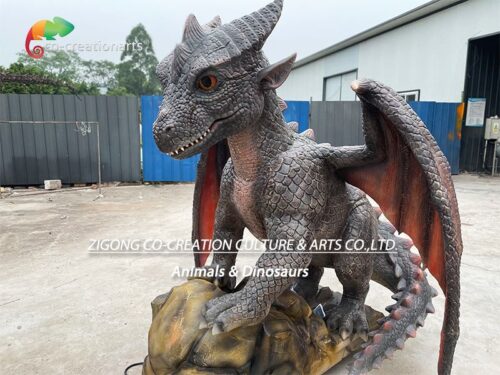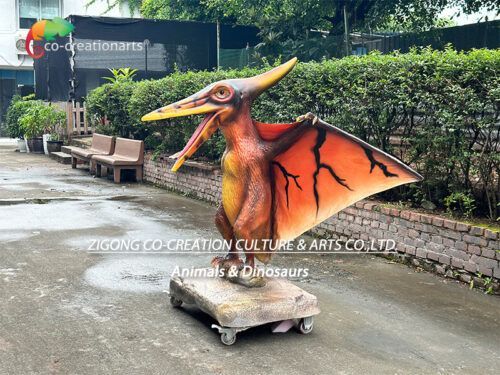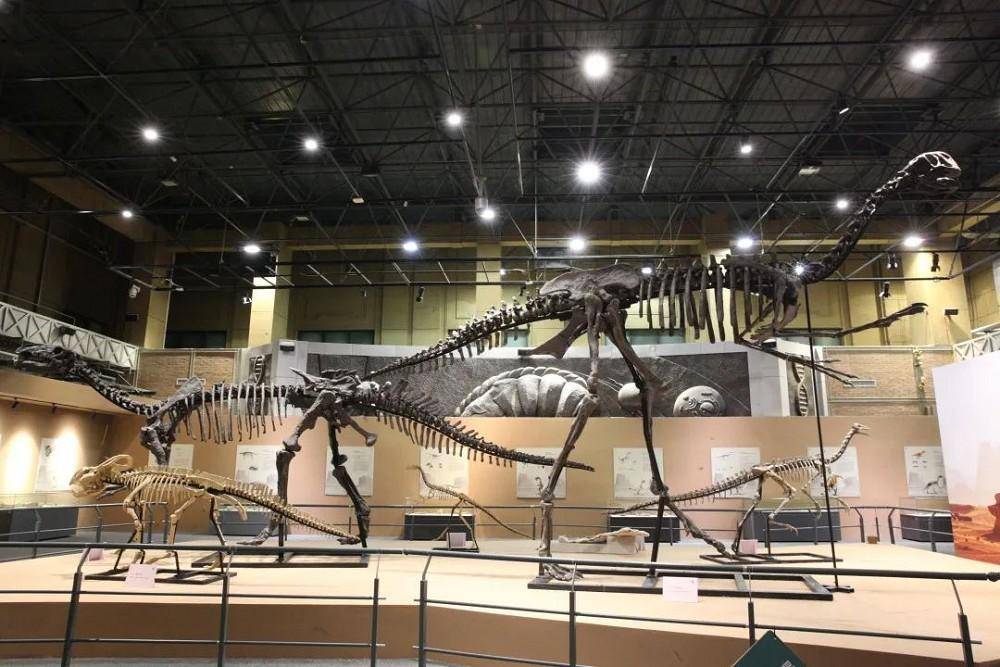
by artfty | Feb 20, 2023 | Paleontological Science
Beijing Museum of Natural History
Dragon Travels the Gobi: Cretaceous Dinosaurs from Inner Mongolia
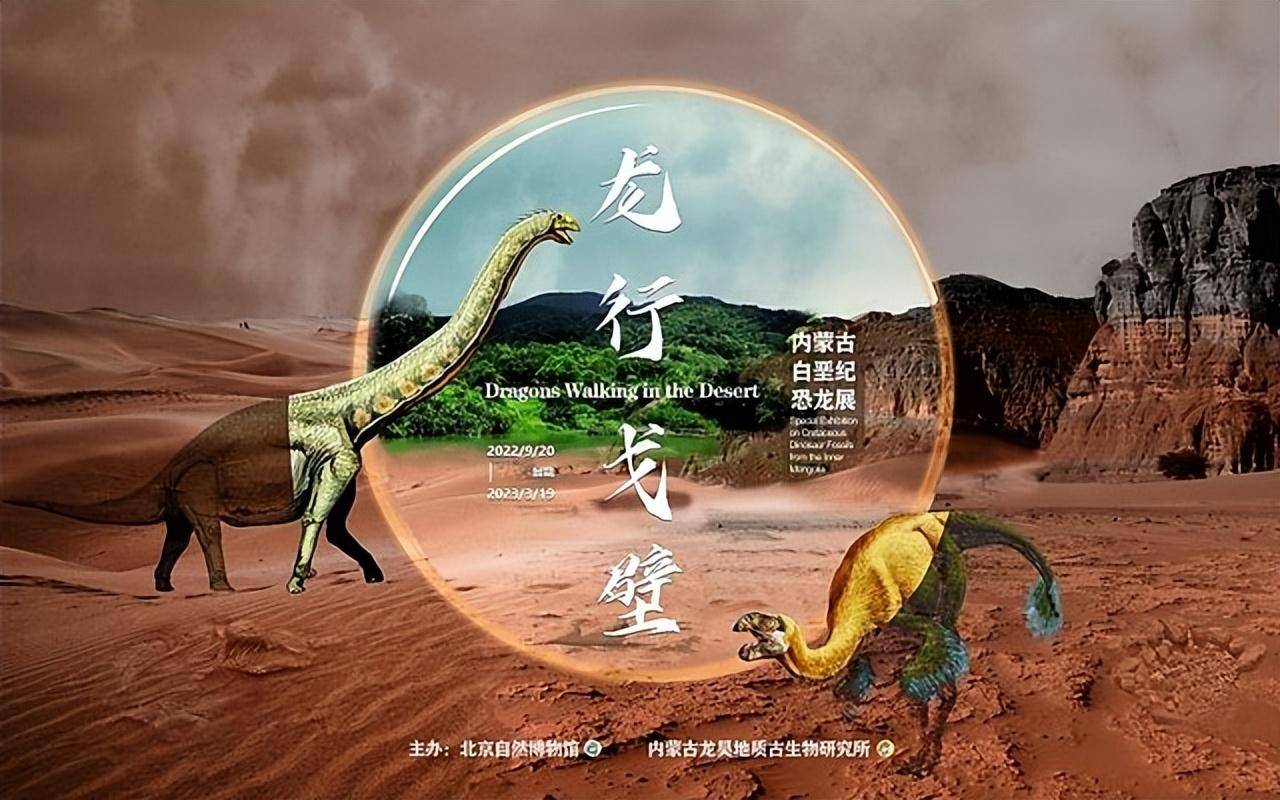
The Mongolian Plateau is one of the hot spots in the study of paleo-vertebrate zoology and biostratigraphy in the Cretaceous period. Since the 1980s, many valuable reptile fossils, including dinosaur bones, eggs and embryos, skin marks and footprints, have been discovered in the Gobi Basin and Erlian Basin of Inner Mongolia, which are of great significance to the study of the global classification of dinosaurs, the mystery of dinosaur extinction, and the exploration of the geographical and climatic changes of the ancient Mongolian Plateau.
Fossil of Gigantoraptor Erlian (left forepaw)
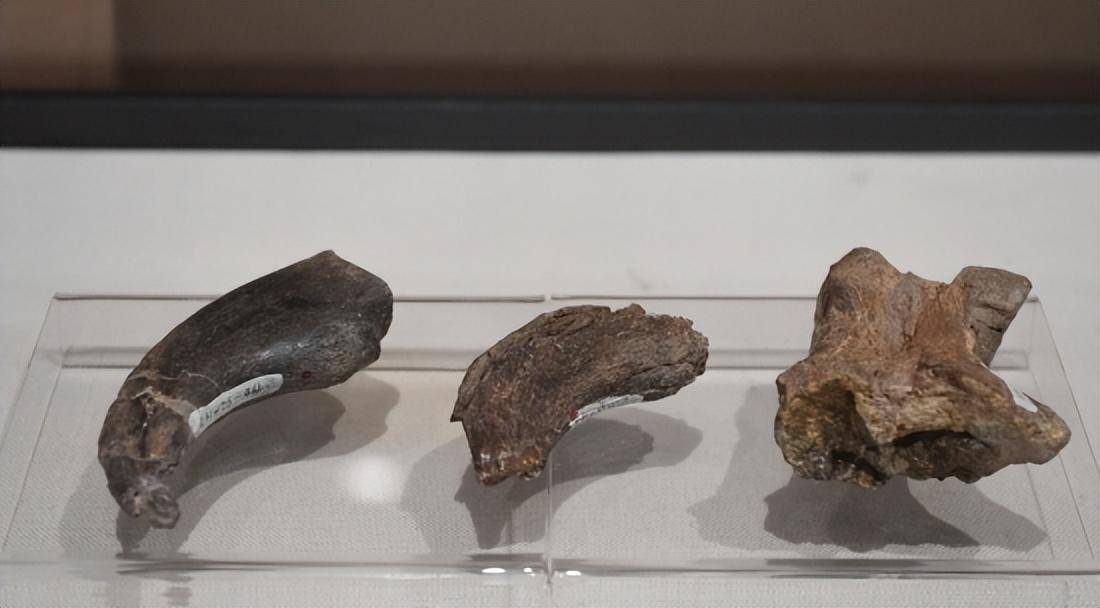

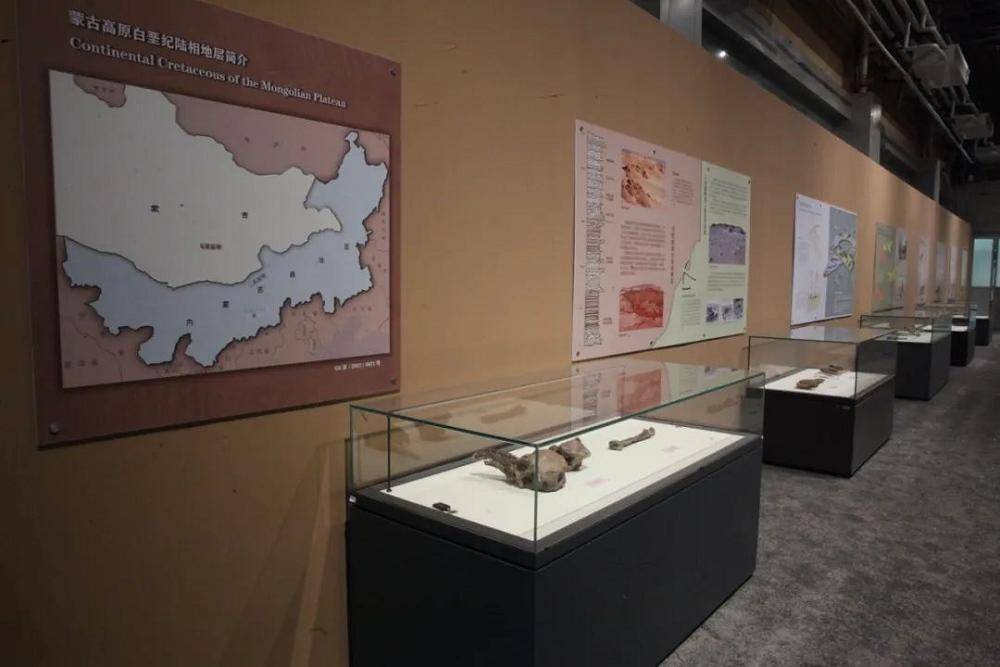
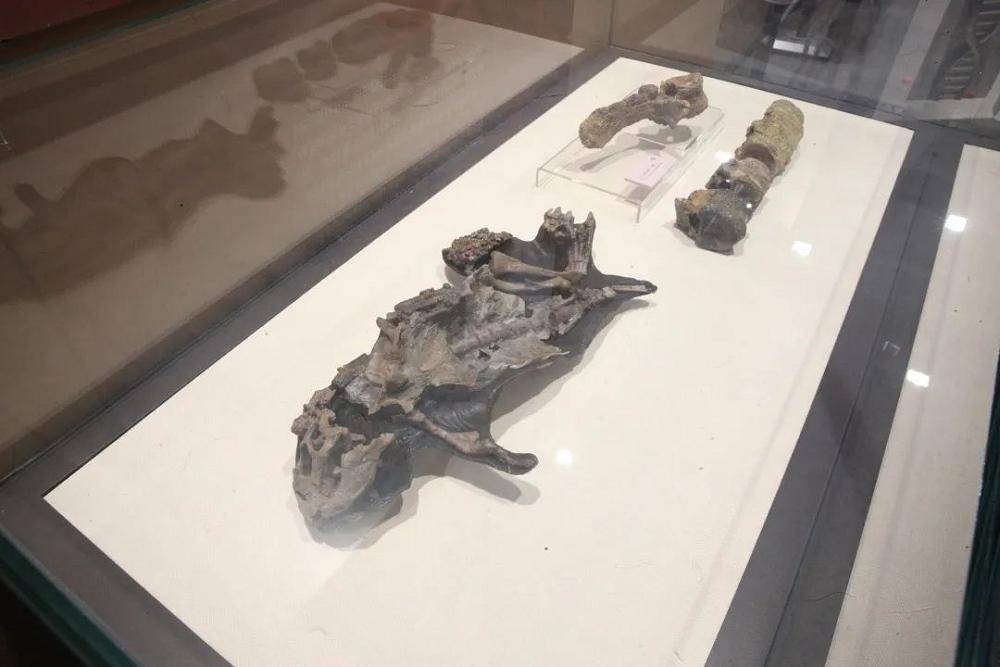
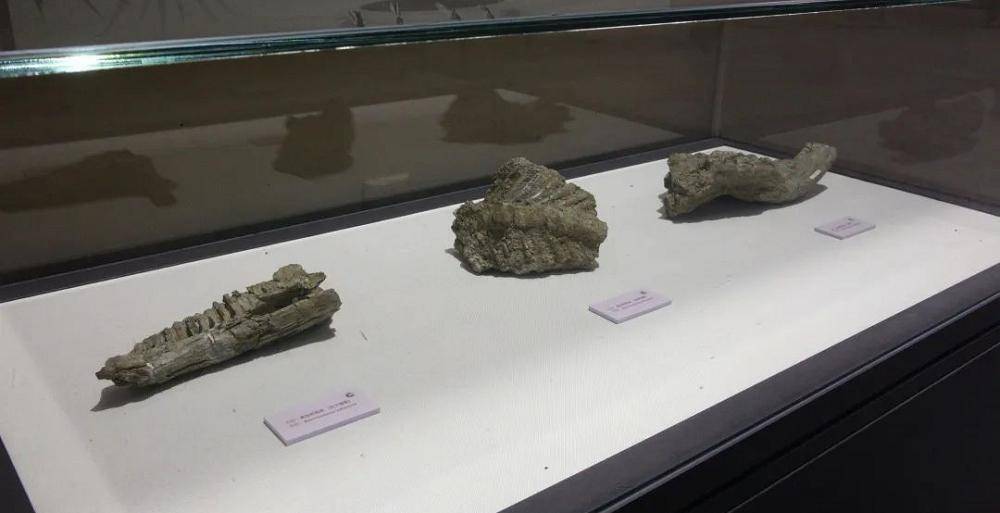
Among the exhibits of interest is the fossil of Gigantoraptor Erlian. Gigantoraptor Erlian is the largest known oviraptorid dinosaur, with a body length of about 8 meters and a standing height of more than 5 meters. Its fossils were first discovered in Erlian Basin, Inner Mongolia in 2005. Gigantoraptor Erlian is a special case in the evolution of dinosaurs into birds. Despite its large size, it has more bird-like characteristics than the small oviraptorosaurs, which greatly enriches human understanding of the evolution of dinosaurs into birds.
Other important exhibits include the perfect Bayannur fossil, which is important for understanding the early evolution of iguanodon, the Dong’s Chinese ornithlike fossil, which is preserved in situ and more than 90% complete, and the Gobi Psittacosaurus fossil, which contains several gastroliths.
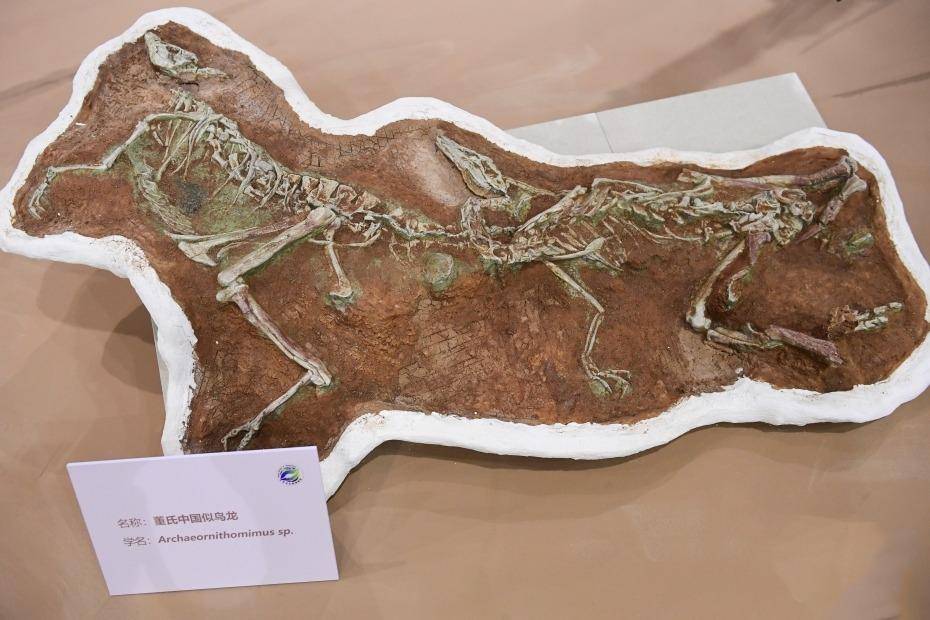
Dong’s fossil of Ornithosaurus chinensis
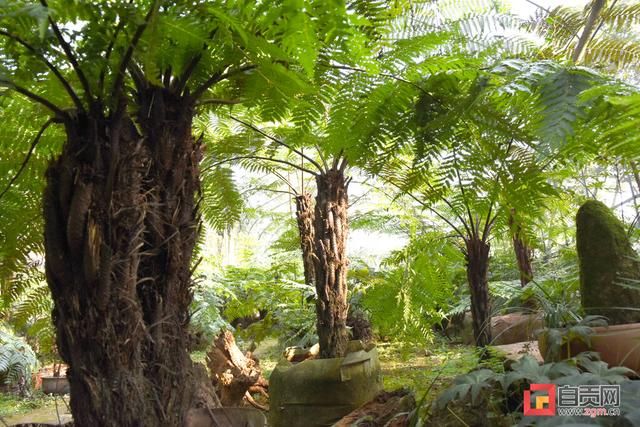
by artfty | Feb 15, 2023 | Paleontological Science
Alsophila spinulosa tree, which was once eaten by dinosaurs. In Rongxian County, Zigong, there are not only the Qinglongshan site of Mid- Jurassic dinosaurs and other vertebrate fossils dating back 160 million to 170 million years, but also a “national treasure” Alsophila spinulosa tree growing naturally in Sifang Jinggou, Jinhua Township, Rongxian. In addition to nature conservation, Lee Yue-fu has successfully propagated Alsophila spinulosa tree with seeds (spores) since 2012. Nearly 30,000 Alsophila spinulosa trees were artificially bred. This tree was recently seen at the artificial breeding park near Alsophila spinulosa Lake in Dapyeong Village, Dongga-jin, Yeonggun.

“The Alsophila spinulosa tree is more than three metres tall and nearly 10 years old, and as you can see it is healthy and robust, it is a good seedling that can grow into a big tree.” Li Yuefu, the owner of the breeding park, stroked a tree trunk and said that the garden, which stretches for more than two kilometers in a mountain gully, has more than 30,000 artificially bred Alsophila spinulosa trees ranging in age from one to 10 years, among which some are potted, some can be used for landscaping and some are suitable for popular science tourism.
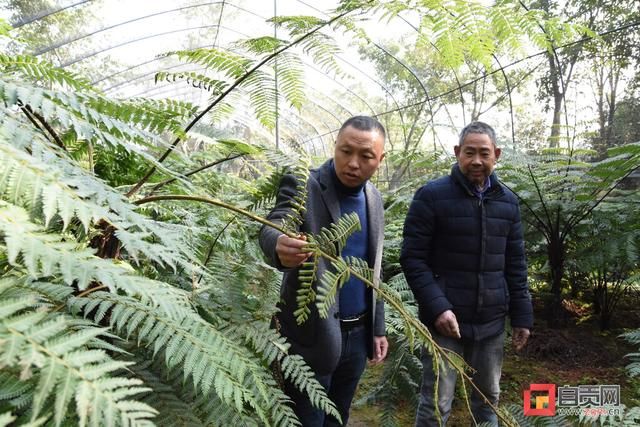
The Alsophila spinulosa Nature Reserve, a nature reserve of Sichuan Province, is one of the eight national key protected plants, with a living fossil of Alsophila spinulosa that appeared in the Carboniferous period and is 300 million years old, 100 million years before the emergence of dinosaurs, Li said. The local villagers take special care of the “national treasures” in the reserve. In order to allow these “national treasures” to be “reborn” in a different place, they use the seeds of “national treasures” for artificial reproduction and achieve success.
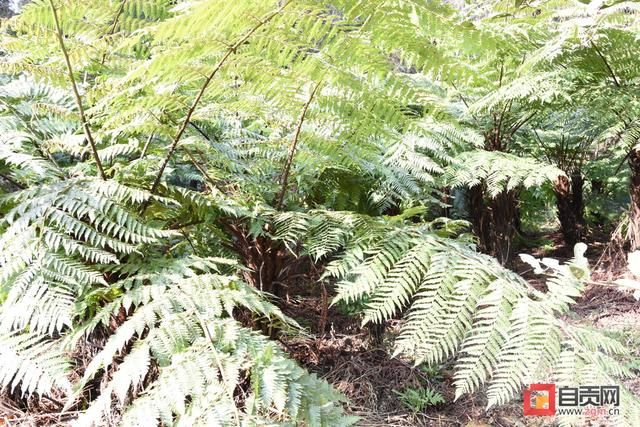
Lee is known to have established the Alsophila spinulosa Bay Ecological Agriculture Development Co., Ltd. in Zigong City to make the artificially bred tree more productive. In addition to artificially breeding Alsophila spinulosa trees to be sold in and out of the province for landscaping and popular science tourism, the company is developing a series of Alsophila spinulosa tea and Alsophila spinulosa wine. (Jiang Bing)
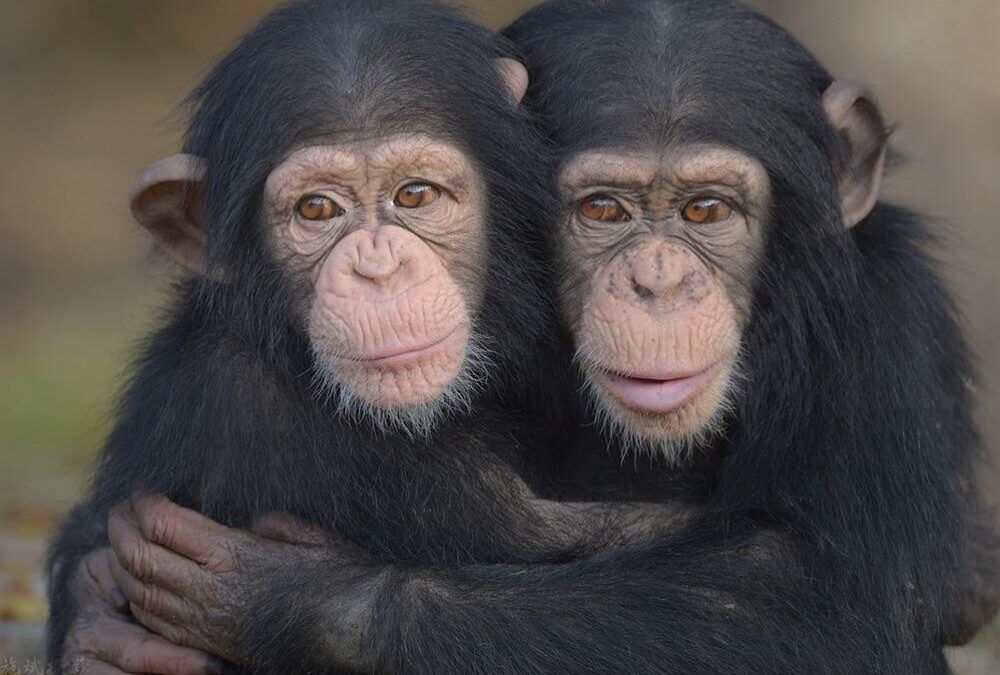
by artfty | Feb 14, 2023 | Paleontological Science
It is a common question on the Internet: Why did dinosaurs fail to produce intelligence after hundreds of millions of years of evolution? Human beings, on the other hand, only took millions of years to develop an advanced intelligent civilization. Why is that?
To put it simply, dinosaurs did not need to evolve intelligence, nor did they have the ability and conditions to evolve intelligence, while human beings evolved intelligence can be said to be forced to.
Let’s start with why we evolved intelligence.
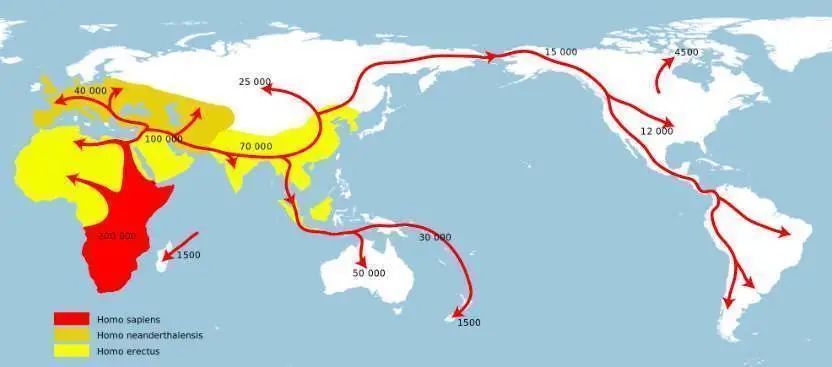
An important prerequisite for the evolution of human intelligence is the brain, and the evolution of the brain is fundamental. According to the current mainstream theory, the ancestors of modern humans came from East Africa, where Homo sapiens evolved and then spread around the world.
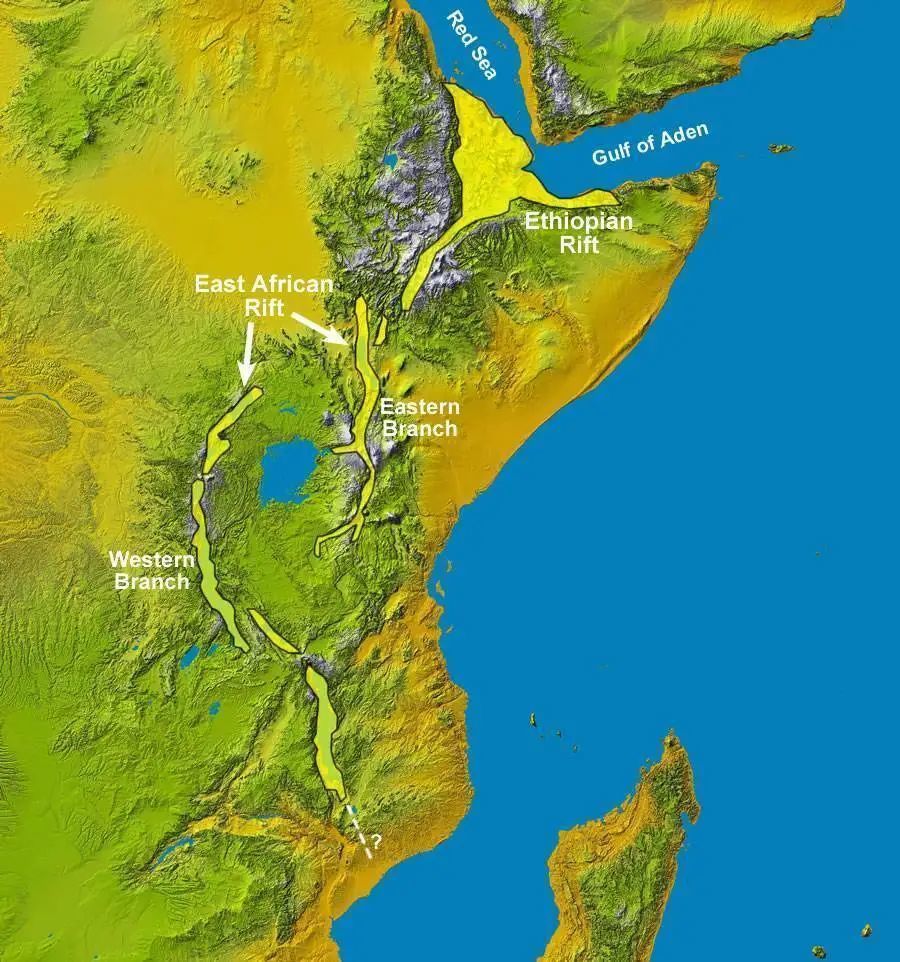
The nature of species evolution is actually genetic variation, but in the process of inheritance, variation is completely random behavior, we cannot predict the direction of variation.
Since evolution is variation, and variation is random, evolution is also random and directionless. In the course of evolution, nature makes choices all the time, and the ones that don’t fit will eventually be weeded out, and the ones that do will stay.
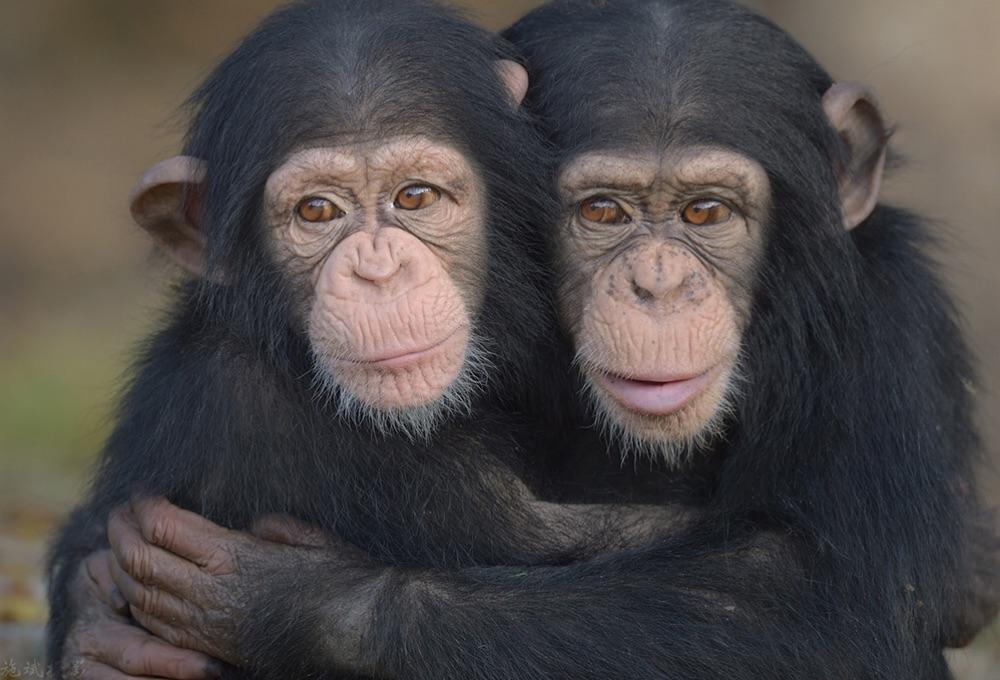
According to the mainstream theory of human origin, the ancestors of human beings are the apes living in East Africa. Due to environmental changes, such as the emergence of the Rift Valley in East Africa, the climate of East Africa went through great turbulence, and the dense forest eventually became grassland, and the apes living in the forest had to move from the forest to the grassland.
When they first came to the grassland, the apes were certainly not adapted to it, and it took millions of years of trial and error. Originally in the forest, with flexible skills, the ancient ape can be called the king of the forest, life is very comfortable. But when they came to the prairie, they fell from heaven to hell. Without the ability to run fast, it is difficult for an ancient ape to take advantage of a wild animal.
Over a long period of time, the apes have been severely tested. But one group of ancient apes stood out, starting by walking upright. The variation of upright walking is not achieved overnight, nor can it be changed at the will of the apes. Instead, it has been trial and error in the process of continuous variation, undergoing survival of the fittest, and finally the upright walking variant gene has the last laugh, which has been screened by nature.
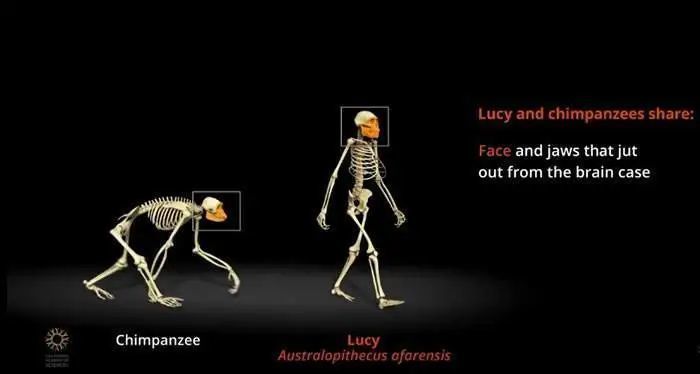
Walking upright has huge advantages over crawling on all fours. Walking upright, for example, saves energy, frees up hands and allows the apes to move quickly when attacked by an animal. At the same time can also make use of attacks, greatly improve the efficiency of obtaining food. By walking upright, the apes also had a higher view of the beasts and were prepared in advance.
Survival is a basic skill that any species must possess, and walking upright would have made it much easier for an ancient ape to survive.
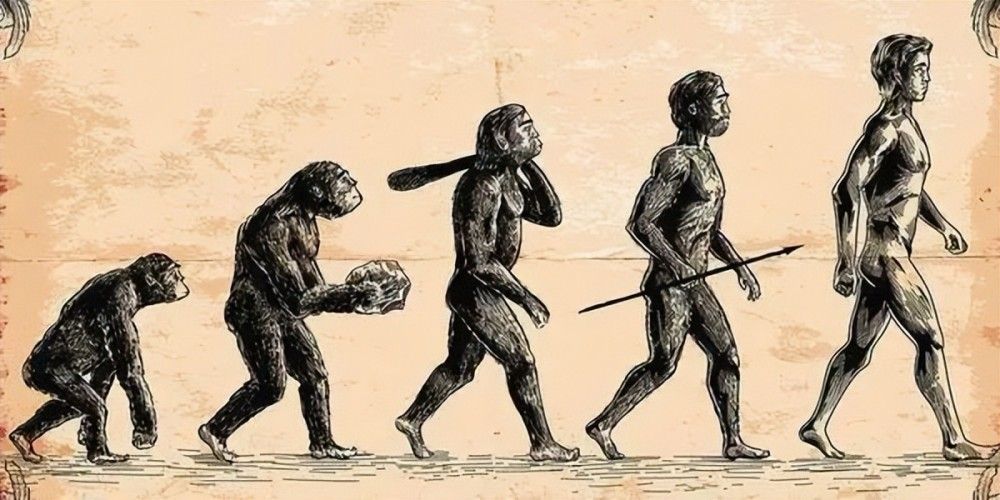
Now, walking upright also laid the foundation for later human civilization. Without upright walking, the large brains of the ancient apes would have had no support at all. Even with the relevant genetic mutations, intelligent civilization would not have evolved in the end, but only a flash in the pan.

However, the expansion of brain capacity is not all good, because the brain’s neural network is too complex, to maintain the brain needs a lot of energy consumption, scientists analyzed that human brain energy consumption accounts for more than 20% of the total energy needed by the human body, which was not friendly to primitive humans, because primitive humans have very limited means to obtain energy, energy is quite scarce. But in order to maintain the brain’s energy expenditure, they had to reduce the body’s other energy expenditure to keep the brain’s energy needs as high as possible.
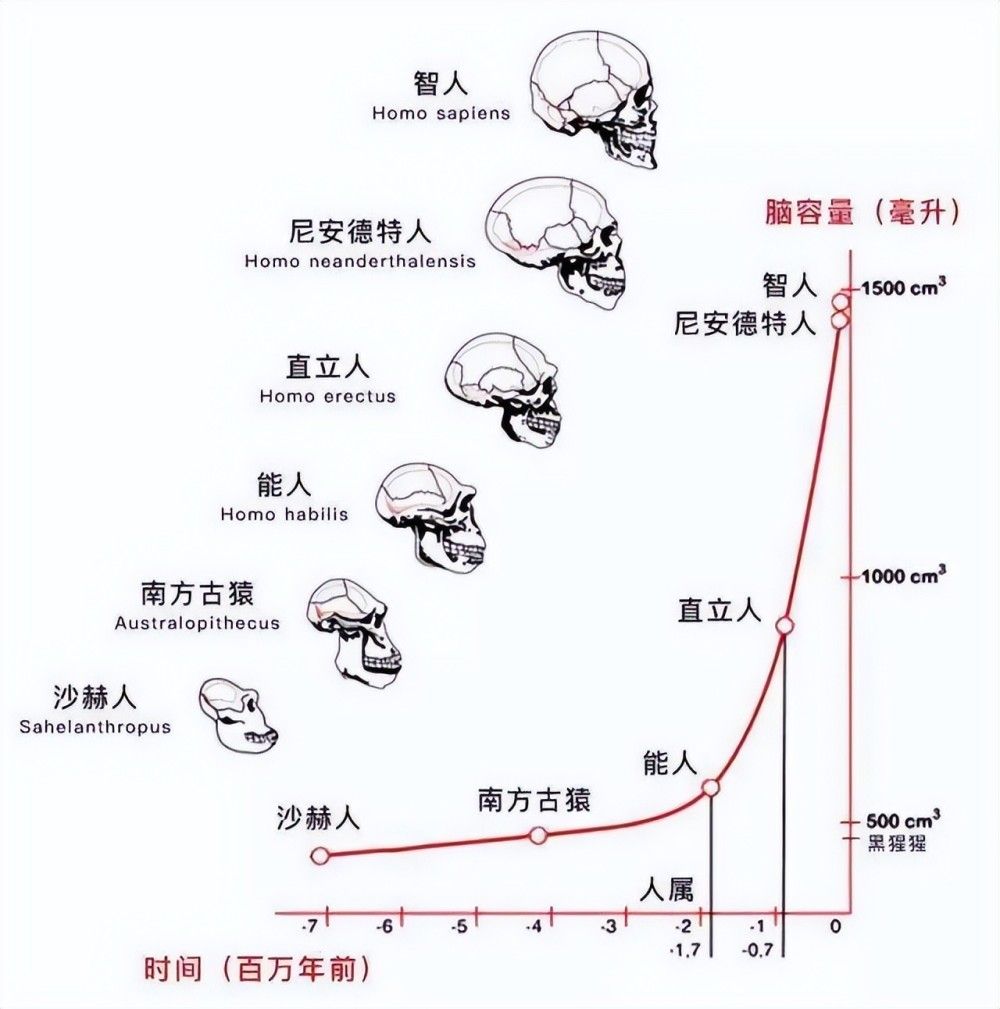
The benefits of having a larger brain are numerous. That means stronger and more efficient abstract thinking skills, organizational communication skills, hands-on skills, etc. These increased abilities greatly enhanced the quality of life of both the hominids and the hominids, who soon rose to the top of the food chain.
When human beings were no longer tired for food, the society began to evolve a lot of different division of labor, and human beings also had enough time and energy to study science, art and other fields, which led to our modern civilization.
So why didn’t dinosaurs evolve an intelligent civilization?
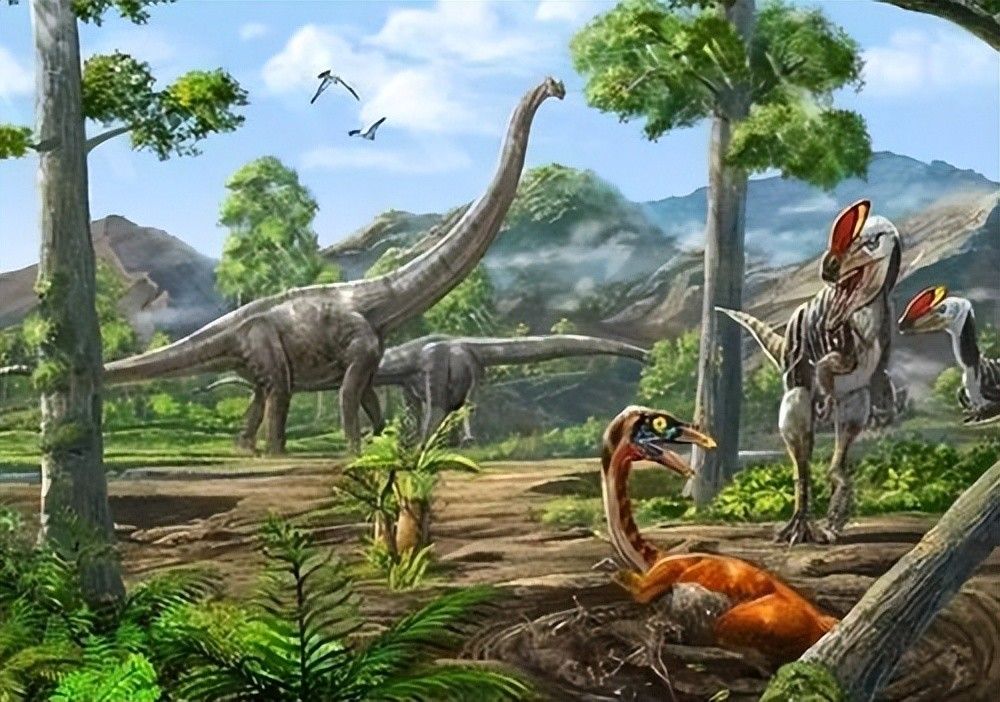
To put it in plain English, because dinosaurs were completely the “rich second generation”, they lived in an evolutionarily perfect age, there was no conditions and motivation for the evolution of wisdom.
Dinosaurs lived at a time when plants and animals were everywhere, which was heaven for herbivores and meat-eating dinosaurs. The so-called born in distress and die in happiness, in such a beautiful living environment, they have no evolutionary wisdom power.
One more point, mentioned at the beginning of the article, is that evolution is a very random behavior, and even dinosaurs would have needed genetic variation in this aspect to develop intelligent brains. At the very least, even if a particular group of dinosaurs were genetically modified to be more intelligent, that wouldn’t give them an advantage, it would be a disadvantage, because intelligence means greater energy expenditure. Right
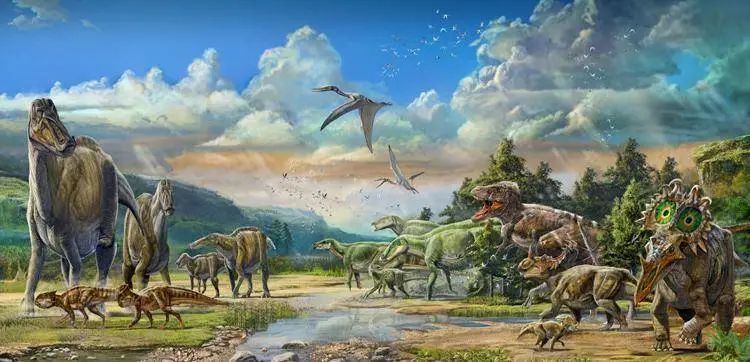
If there were no advantages, nature would not have evolved in this direction! For dinosaurs, their big mouth and big body is “ wisdom”, at the time, there is no better use of such wisdom!
Finally, there is no high or low level of evolution. Evolution does not necessarily evolve in the direction of intelligence. The only purpose of evolution is to adapt to the environment, and there are many ways to adapt to the environment, intelligence is just one of them.
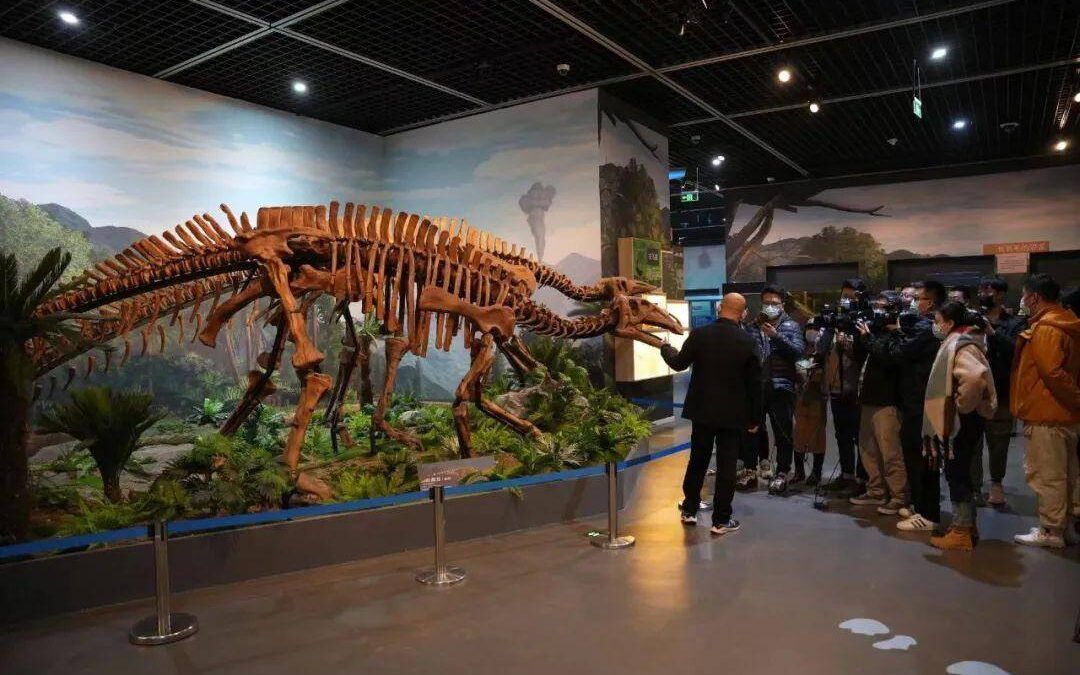
by artfty | Feb 8, 2023 | Paleontological Science
Are dinosaur eggs all big?
You know the first one on earth
What was a feathered dinosaur like?
Do you know which dinosaurs are named after Liaoning?
Want to know the answer?
Come on, let’s go to the show with B!
Today, August 25th
It was held by Liaoning Provincial Museum
“Happy Soil — Liaoning Paleontological Fossils Exhibition”
Officially launch
The answer to a long list of mysterious questions has been officially revealed
This is the first time for Liao Bo to hold the event
A large exhibition of fine paleontological fossils
The duration of the exhibition is
August 25 to August 8, 2023
The exhibition consists of five units
√ “ Prehistoric dinosaur Palace – Aquatic Vertebrates”
√ “ Dinosaurs, Birds and pterosaurs”
√ Lizards and Mammals Try to Survive on Dinosaurs’ Feet
√ “Ancient Verdant — Ancient Plants”
√ Flowers and Insects
Under the coordination of Provincial Department of Natural Resources
Curating team from the province 11 paleontological fossils
Collection unit of nearly 4000 pieces in the collection
Eighty-seven fine fossils were selected
And Liaoning Provincial Museum collection over the years
More than 40 fossils are on display
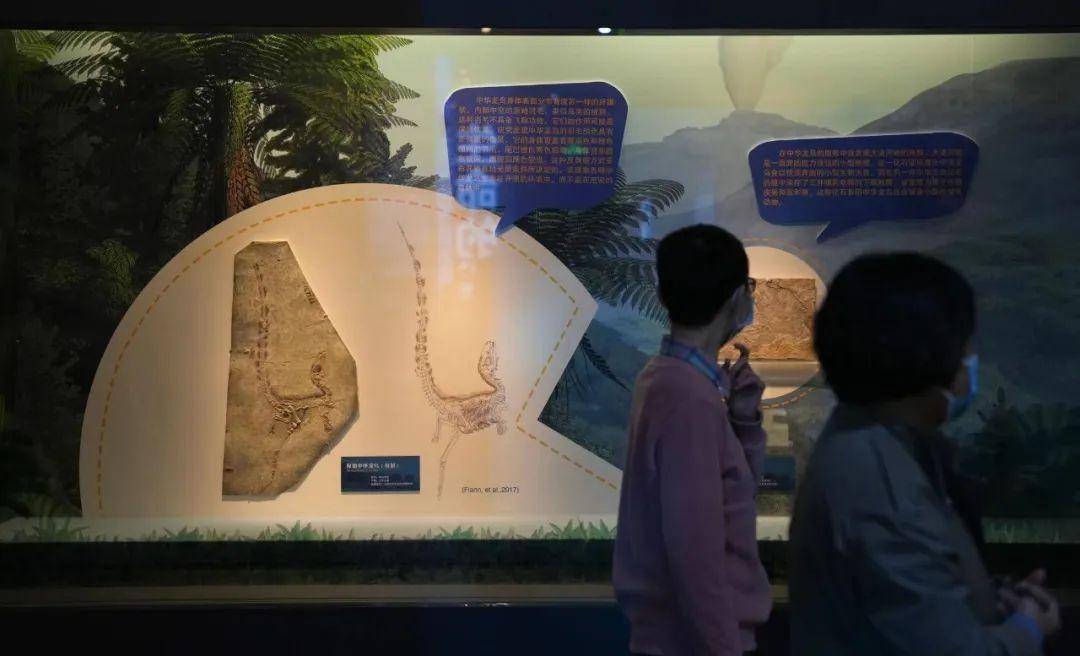
These ancient fossils are not ordinary
All beautifully preserved and unique
It’ll be a feast for your eyes
√ The first feathered dinosaur on Earth
√ The earliest angiosperms
√ First beak
√ The first dinosaur to dare to eat
Mesozoic mammals
√ The original feather
√ The earliest eutherans
Come and visit the exhibition
You can not only see our Liaoning fossil treasure
And a chance to see
A national treasure of a fossil
Liaoning Province is rich in paleontological and fossil resources. The total amount of fossils in Liaoning ranks among the top in China, and it is a world-renowned important fossil producing area. With a geological history of more than 3 billion years, there are many biota in Liaoning Province, among which the “Jehol biota” and “Yanliao Biota” demonstrate to the world in unprecedented detail the unique terrestrial and freshwater animal and plant communities ecosystem of the Mesozoic era.
In this exhibition, you can appreciate a number of precious national treasure fossils, these fossils are located in Liaoning, such as Dalian Museum of Natural History in Liaoning Changtu found name
“Round round egg” dinosaur eggs; There is also the Early Cretaceous meisaurus found in Lujiatun, Beipiao Shangyuan Town, Liaoning Province.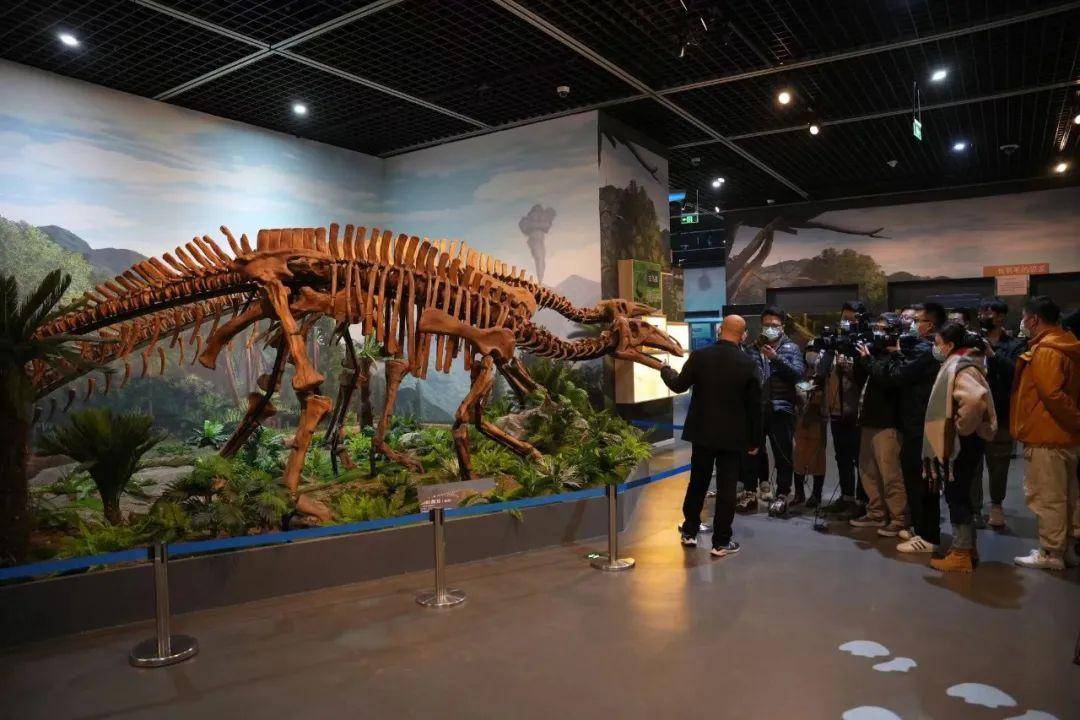
And these dinosaurs are named after Liaoning
I wonder if you’d like to see it
What do they look like?
China Liaoning Giant Dragon, Liaoning Strange Dragon,
Liaoceratosaurus Yanziogou, Liaoning Long-Sleeping Osaurus,
Dalian Dragon of Liaoning Province
Among them
And the world’s smallest ankylosaurus
Liaoningsaurus mirabilis
It was found in Yixian county, Liaoning province,
It is a strange Liaoning dinosaur fossil from the Early Cretaceous
It looks small and cute
And some dinosaurs
Named after the city in Liaoning Province
Beipiaosaurus accidentalis, Jinzhousaurus Yang
Sun Legend Dragon, Yang’s Chaoyang dragon
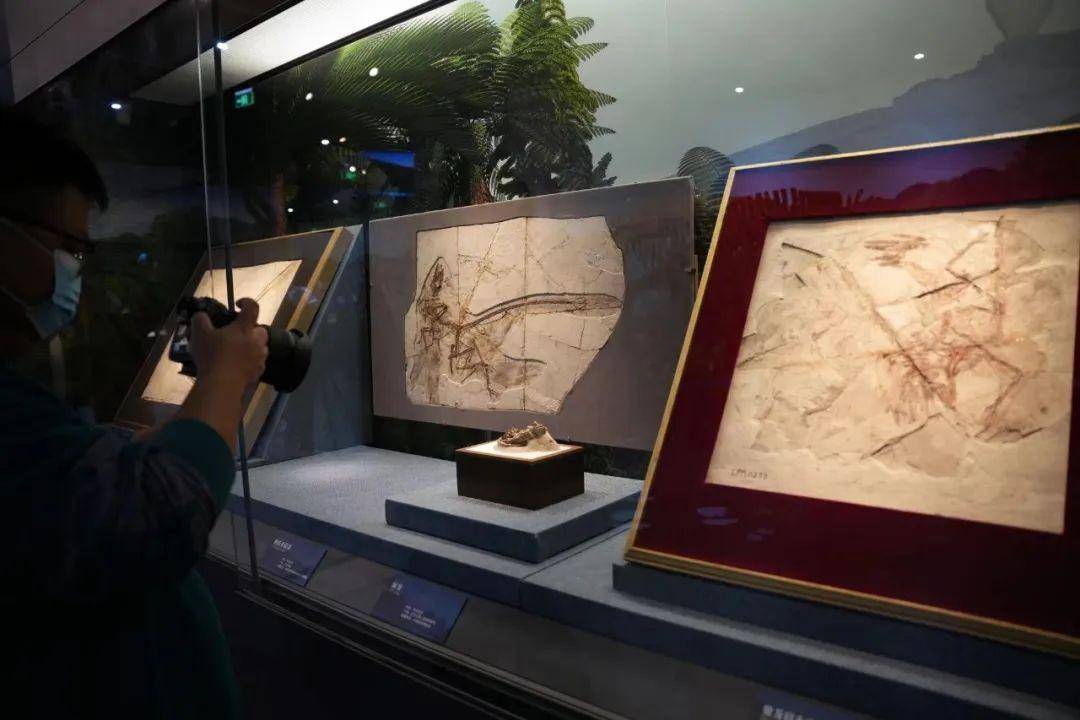
The exhibition was organized by Liaoning Provincial Department of Natural Resources and Liaoning Provincial Public Cultural Service Center, and organized by Liaoning Provincial Museum and Liaoning Museum of Paleontology. It was co-organized by Liaoning Provincial Natural Resources Affairs Service Center, Dalian Museum of Natural History, Chaoyang Bird Fossil National Geopark Museum, Chaoyang Jizan Tang Paleontological and Fossil Museum, BeipiaoSihetun Paleontological Museum, Yixian Yizhou Fossil Museum, Sino-German Paleontological Museum and Liaoning Technical University Geological Museum.
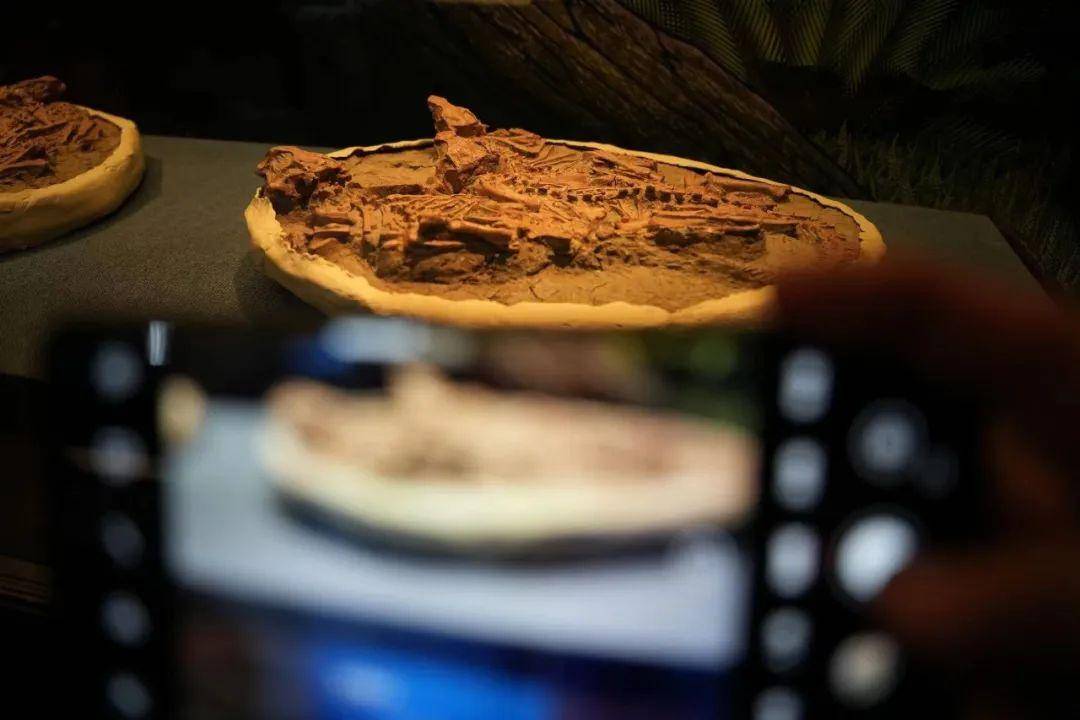
Zhang Li, deputy director of the Liaoning Provincial Museum,
It is the first time in the history of Liaobo that such a large scale of fine fossils are exhibited in Liaoning Provincial Museum. “Fossils are treasures given by nature, imprinted with the code of ancient life. Based on the latest scientific research achievements of paleontologists, this exhibition presents to the audience a variety of paleontological fossils from hundreds of millions of years ago in Liaoning, together with a wonderful multimedia display, art and science restoration of paleontological maps, rich plates and text descriptions, restoring the ancient life that was active in this happy land in Liaoning during the Mesozoic era.”
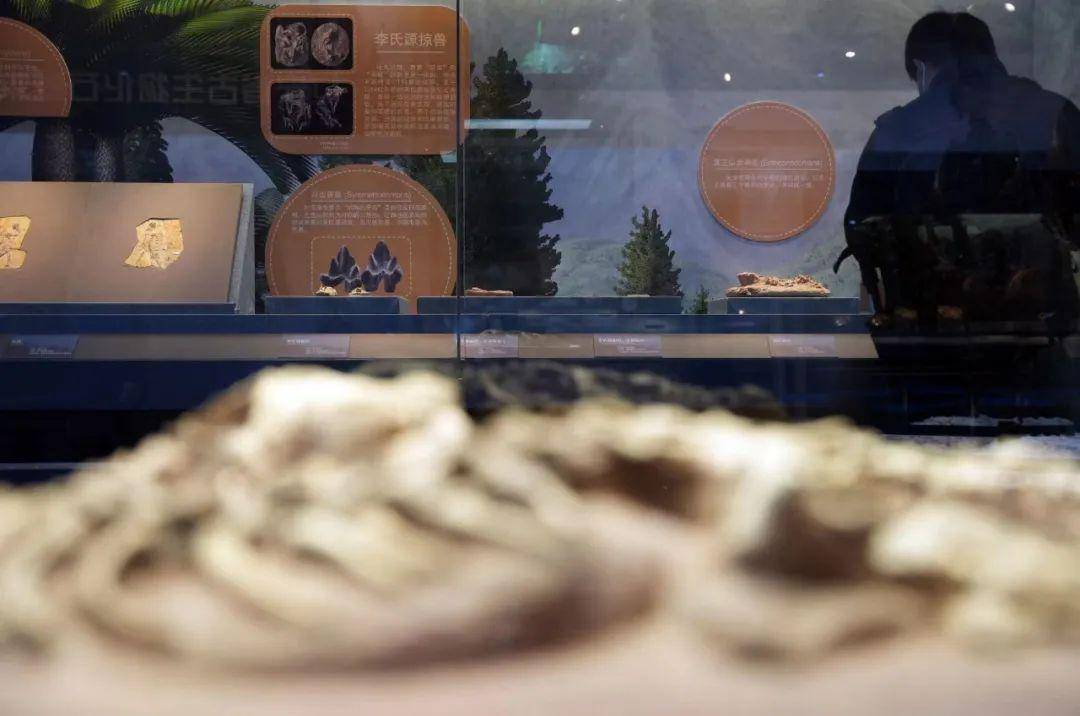
The secret of ancient life
Go and clock in
Reporter: Huai Ye
Photography is by Chang Shenggang
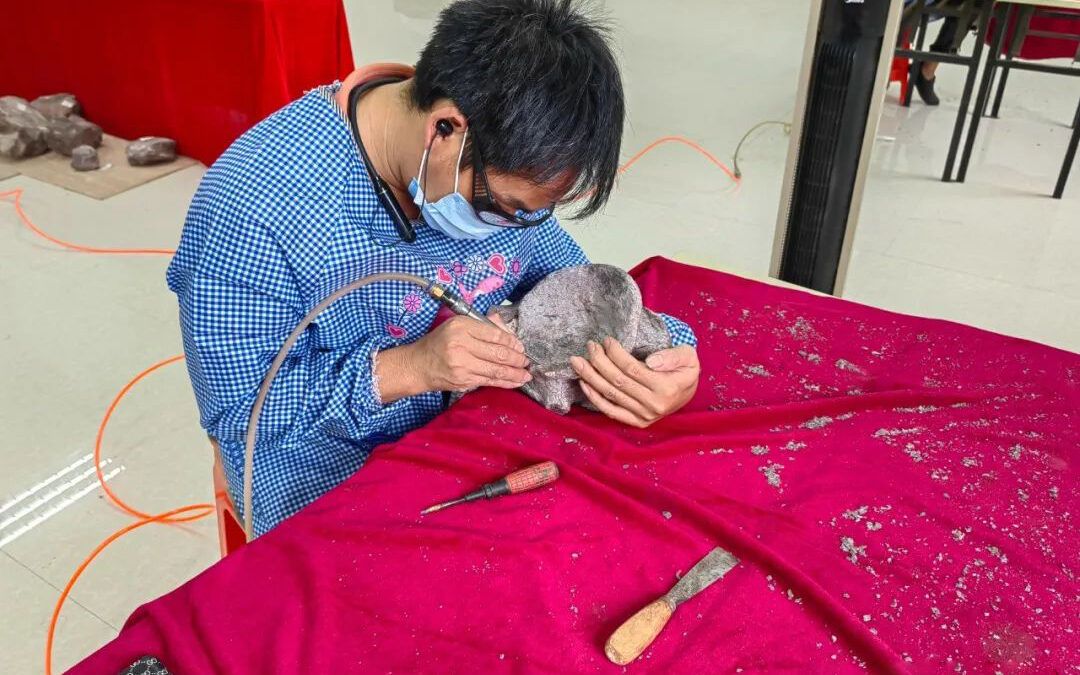
by artfty | Feb 8, 2023 | Paleontological Science
A dinosaur fossil unearthed in 2021 at the construction site of the front road of a high-speed railway construction project in Dongxing City has completed the first stage of restoration after a one-month restoration by technicians from the museum of Hebei University of Geosciences.
On February 3rd, the reporter came to the Dongxing Dinosaur Fossil Herbarium and saw that the dinosaur fossils collected in the room were arranged neatly, each fossil was numbered in detail, and the restored dinosaur fossils showed clear skeletal Outlines. It is known that in 2021, 363 dinosaur fossils have been excavated during the construction of the front road of Dongxing high-speed railway construction Project. At present, experts have repaired the cervical vertebra, dorsal vertebra, tail vertebra, neck rib, femur and other skeletal fossils, which are preliminatively determined to be sauropod dinosaur fossils.
Zeng Chunjun, director of the technology department of the Museum of Hebei University of Geosciences, who participated in the restoration work, said that before the Spring Festival, they carried out restoration work on the missing dinosaur fossils, mold making, mold turning, and scaffolding, and the progress was relatively smooth. For now, the restoration work has been suspended, pending the next discovery of new dinosaur fossils.
The reporter saw in the dinosaur fossil excavation site, the site set up a enclosure protective awning, to protect the exposed dinosaur footprints fossil specimens. Remarkably, five dinosaur footprints, about the size of a human hand, are spaced out on a boulder. According to the staff, the footprint fossils and bones they found are different kinds of dinosaur fossils, and the expert study determined that they were theropod dinosaur footprint fossils. It is understood that the footprint remains fossil and bone solid fossil are formed by dinosaurs in different nature and buried environment. It is often difficult to have two fossils in the same formation on a smaller scale. The simultaneous discovery of two fossils at the same site in Dongxing is rare among dinosaur fossil excavations in China and has important research value.







